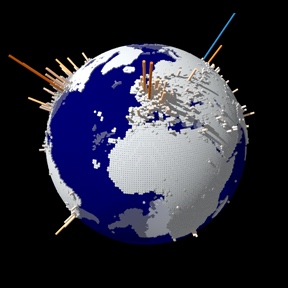Aggregate activity and demand
SECTION 4
The macroeconomic model and competing theories
In studying macroeconomics, the focal point is the whole economy versus markets for goods and services. This approach entails looking at the forces affecting growth, inflation, and unemployment at the aggregate level whether it is output, income, or the set of components within GDP.
In essence, macroeconomics involves studying demand and supply for all goods and services in a nation's economy.
Aggregate demand is the total amount of goods and services people want to buy; in other words, it measures what people wish to purchase rather than what is actually produced.
4.3 A model of the macro economy
4.4 Competing theories about short-run instability
SECTION 5
Aggregate demand
The aggregate demand is the sum of consumption, investment, government expenses, and net exports. Aggregate supply is the total output an economy produces at a given price level. As you learned in microeconomics, firms achieve equilibrium when they produce the quantity of goods and services consumers want to buy - that is, when aggregate supply equals aggregate demand. This unit will examine shifts in aggregate supply and aggregate demand and their short-term and long-term effects for the whole economy.
5.1 Four components of aggregate demand: Consumption, investment, government spending, net exports
5.2 Full employment GDP versus equilibrium GDP
SECTION 6
Fiscal policy
Using various policies and tools, a government attempts to steer the macroeconomy toward three main goals: full employment, price stability, and economic growth. The remaining units in the course will cover conflicts and complexities in relation to those policies and tools. This unit will focus on fiscal policy, which consists of taxing and spending, usually done through acts involving Congress or comparable legislative bodies.
